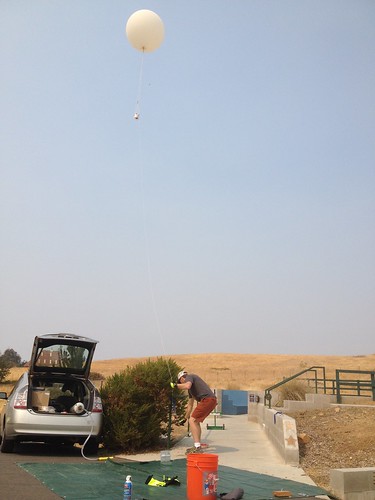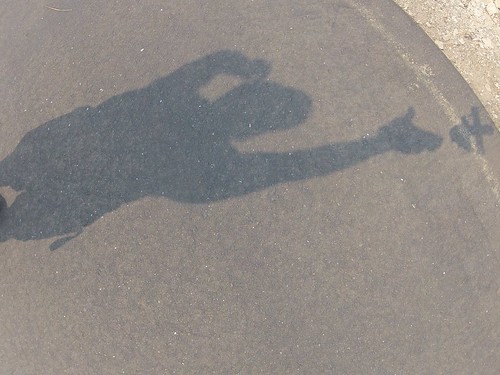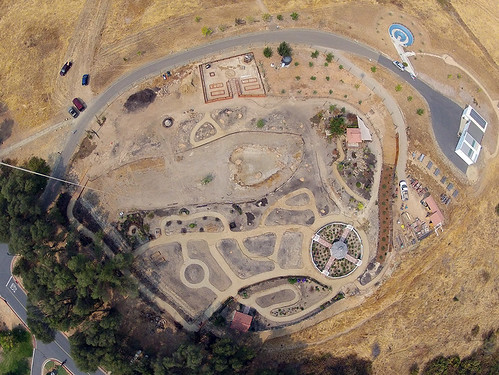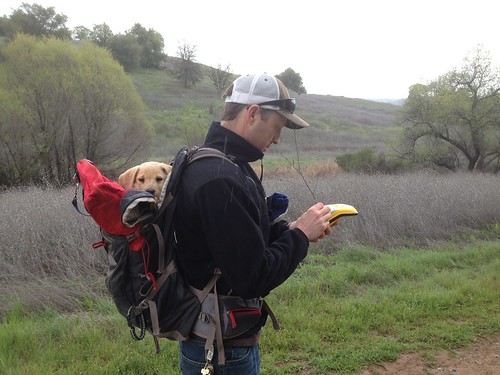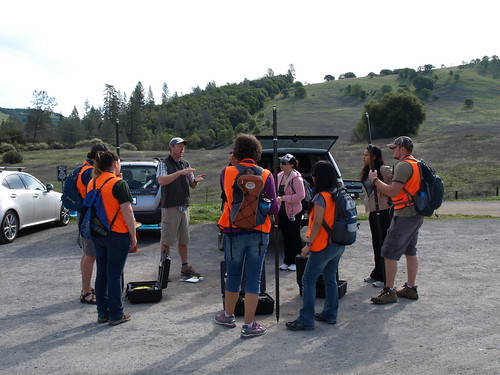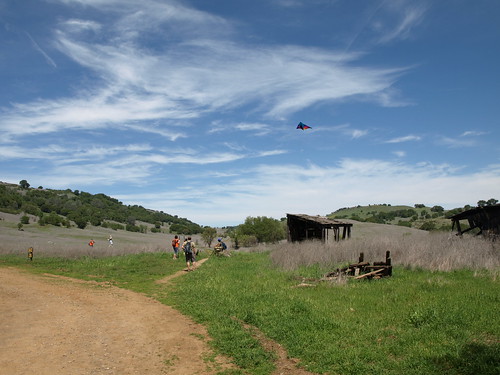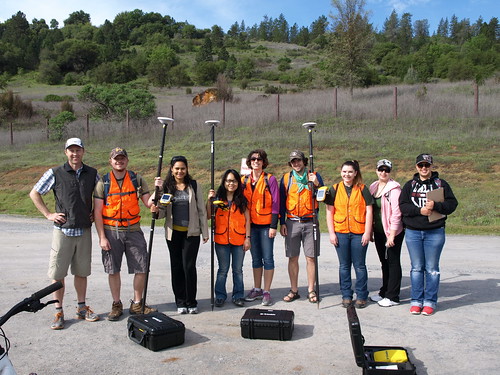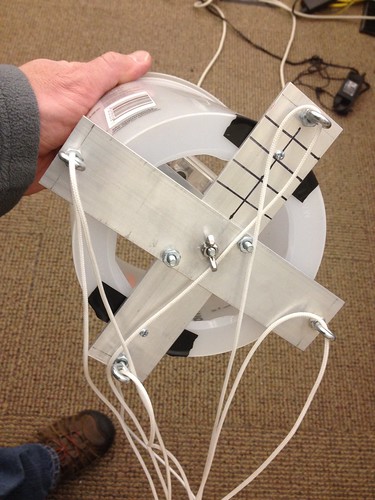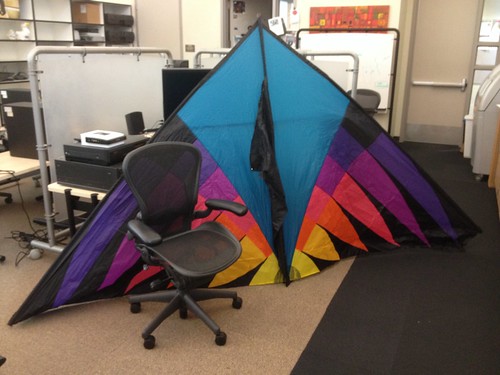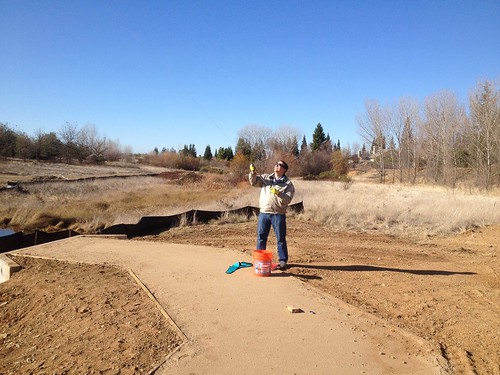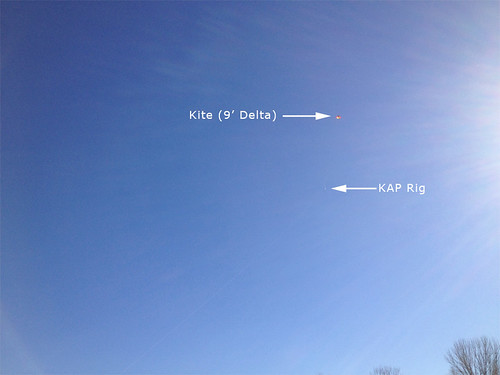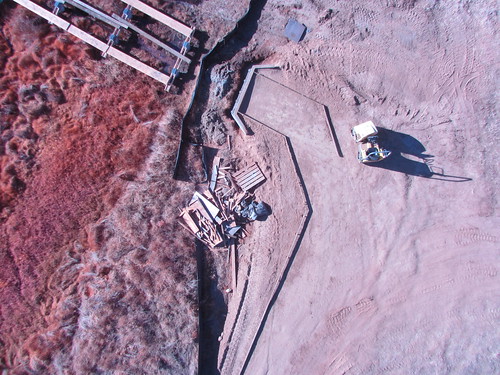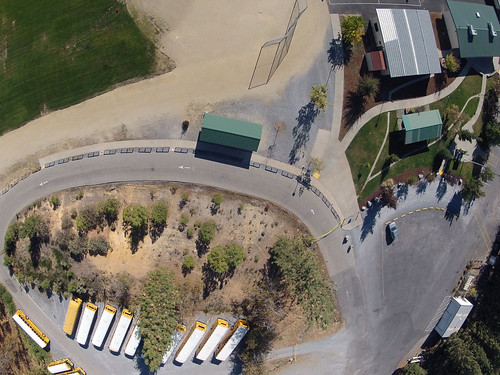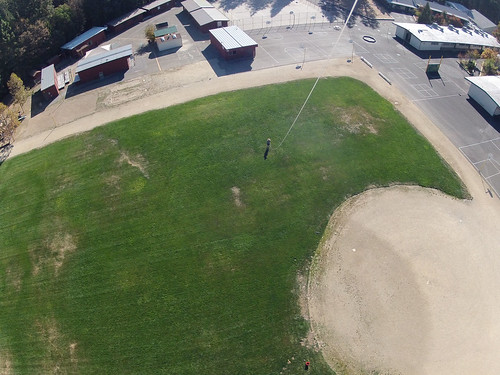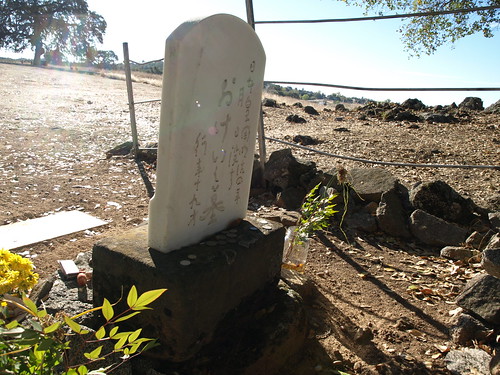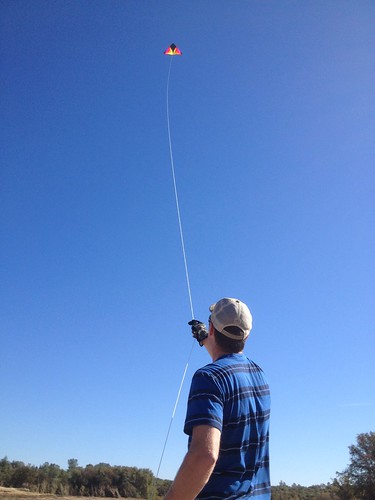With the easing of the helium shortage, we finally acquired a tank or two of the noble gas, and headed up to the El Dorado Center yesterday to launch our new imaging platform. First flights are always a little nerve-wracking, with safety considerations and weather variables and unknowns, but we drafted a protocol, filled the balloon, and sent it up.
We had used half the tank the other day on an aborted attempt – the balloon popped – so we ran out of gas a little short of the balloon’s capacity. While it lifted the picavet, it wasn’t especially enthusiastic about it. We brought it back to the ground, changed the 300# line to 100#, removed the bucket, and sent it back up. These weight tweaks worked well, and the balloon pulled the load gently but definitively.
A balloon is quite a different animal than a kite, and flying it took some getting used to. All in all, quite a bit less stressful than kites or quadcopters, as the helium counteracts (most of) the drop-out-of-the-sky, camera crushing effects of gravity. We were able to capture this nice image of the El Dorado County Master Gardeners Demonstration Garden, a work in progress, and one that we can hopefully document over time with additional flights.
Overall, a satisfying success. Next steps include constructing a new, lighter picavet specifically for the balloon, and finalizing the POV streaming rig we plan to fly over the crowd at a college event in October.


